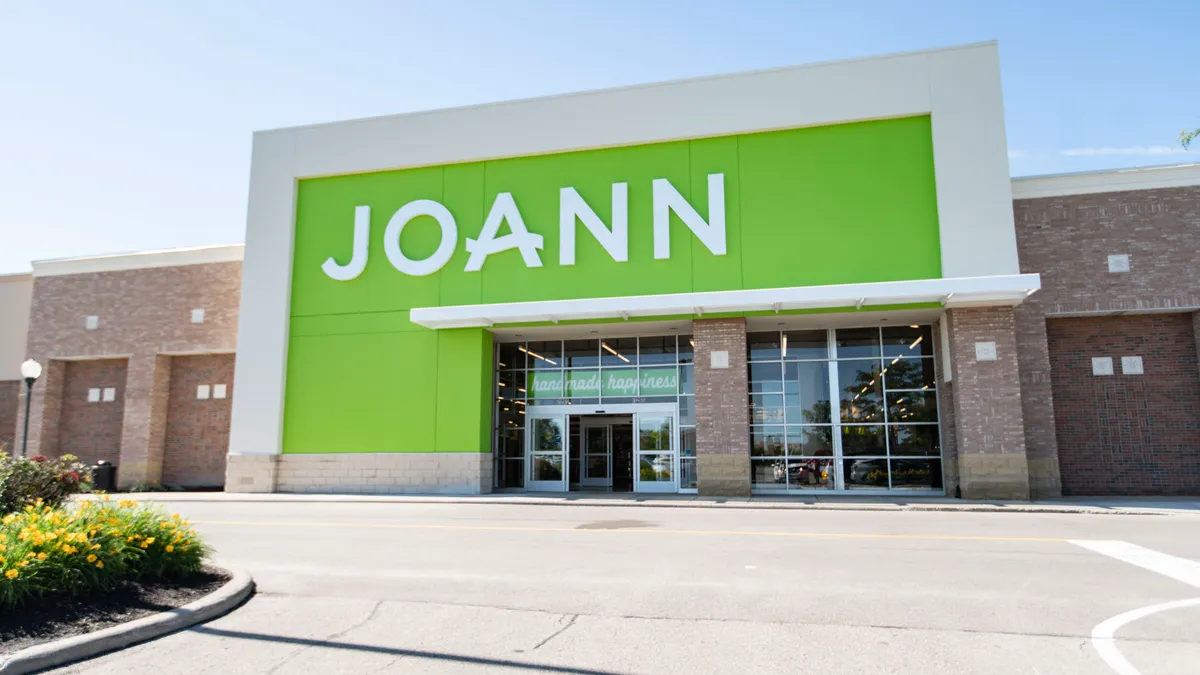Dive Brief:
- Joann spent $35.3 million on excess freight costs in Q4, a spokesperson said in an email, a figure at least 3 times higher than the $11.3 million in Q3.
- "Contributing factors to higher-than-expected freight costs in Q4 include significantly higher container rates, transloading fees, and additional expenses including retention and demurrage fees, need to free up stranded containers," President and CEO Wade Miquelon said during the Q4 earnings call on March 17.
- "Based on our read of the ocean freight market and expectations at U.S. ports will continue to be congested, we see these excess costs affecting our results for all four quarters of this year before normalizing," said Senior Vice President and CFO Matt Susz.
Dive Insight:
Rising ocean freight costs are "onetime" for Joann and "it'll go away," according to Miquelin. "But it's a byproduct of having 90 ships floating off the coast and needing to do special things to pull the product out and pay special penalties you never pay before."
The San Pedro Bay ports are making progress on the congestion. The queue of vessels outside of Long Beach and Los Angeles has dwindled to 47 as of Thursday, according to the Marine Exchange of Southern California. Still congestion poses an issue for some retailers.
The crafts and fabrics retailer Joann had containers stranded at West Coast prolonged by congestion. This led to "higher handling costs and fees to move goods through these ports," said Susz. The company paid nearly $60 million YoY of additional ocean freight and related supply chain costs.
While Joann took "proactive and aggressive measures to ensure we were in-stock," its seasonal inventory was impacted by congestion at the ports, said Susz. There were delays to "a portion of our Christmas and Spring deliveries, impacting early holiday sales in November," said Susz.
A report from Sea-Intelligence shows U.S. West Coast vessel queue will grow again based on their Trade Capacity Outlook database. By using 2021 data from Q4, the report implies that the queue will grow to be 145 vessels by the end of May 2022.
"This is extremely unlikely to happen — simply because there are not that many vessels to be had. What will happen instead, is that the sheer shortage of vessels will lead to many more blank sailings," said Alan Murphy, CEO at Sea-Intelligence.
Although West Coast ports are seeing a temporary decrease in the number of vessels "a surge of container imports is expected once Shanghai reopens," according to a weekly update from Freightos. In addition, BNSF said it is seeing an increase in rail congestion at the San Pedro Bay ports due to "delays in freight moving off the railcars and out of our inland intermodal facilities," according to a statement to Supply Chain Dive.















